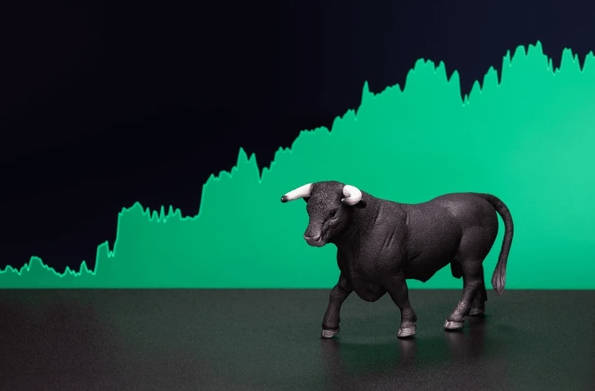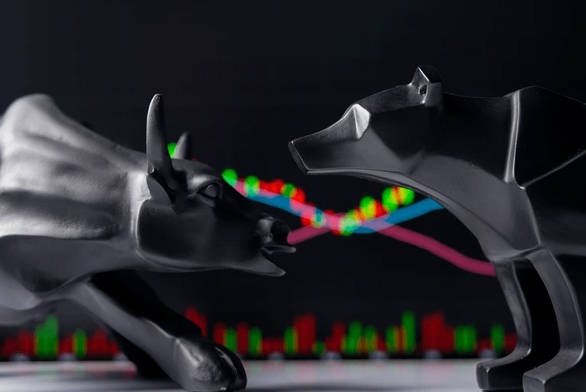Important Information
This website is managed by Ultima Markets’ international entities, and it’s important to emphasise that they are not subject to regulation by the FCA in the UK. Therefore, you must understand that you will not have the FCA’s protection when investing through this website – for example:
- You will not be guaranteed Negative Balance Protection
- You will not be protected by FCA’s leverage restrictions
- You will not have the right to settle disputes via the Financial Ombudsman Service (FOS)
- You will not be protected by Financial Services Compensation Scheme (FSCS)
- Any monies deposited will not be afforded the protection required under the FCA Client Assets Sourcebook. The level of protection for your funds will be determined by the regulations of the relevant local regulator.
Note: Ultima Markets is currently developing a dedicated website for UK clients and expects to onboard UK clients under FCA regulations in 2026.
If you would like to proceed and visit this website, you acknowledge and confirm the following:
- 1.The website is owned by Ultima Markets’ international entities and not by Ultima Markets UK Ltd, which is regulated by the FCA.
- 2.Ultima Markets Limited, or any of the Ultima Markets international entities, are neither based in the UK nor licensed by the FCA.
- 3.You are accessing the website at your own initiative and have not been solicited by Ultima Markets Limited in any way.
- 4.Investing through this website does not grant you the protections provided by the FCA.
- 5.Should you choose to invest through this website or with any of the international Ultima Markets entities, you will be subject to the rules and regulations of the relevant international regulatory authorities, not the FCA.
Ultima Markets wants to make it clear that we are duly licensed and authorised to offer the services and financial derivative products listed on our website. Individuals accessing this website and registering a trading account do so entirely of their own volition and without prior solicitation.
By confirming your decision to proceed with entering the website, you hereby affirm that this decision was solely initiated by you, and no solicitation has been made by any Ultima Markets entity.
I confirm my intention to proceed and enter this website Please direct me to the website operated by Ultima Markets , regulated by the FCA in the United KingdomHow to Differentiate Bull vs Bear Market
In the world of investing, you’ve probably heard the terms bull market and bear market tossed around by analysts and financial news programs. But what do these terms really mean, and how can they affect your investment decisions? In this article, we’ll break down the key differences between a bull vs bear market, explore how to differentiate between a bull vs bear market, and discuss their implications for traders and investors.
What is a Bull Market?
A bull market refers to a period in which the prices of assets (especially stocks) rise consistently, often driven by optimism and investor confidence. The term “bull” reflects the upward movement of prices, symbolizing a market that is trending positively.

Key Characteristics of a Bull Market:
- Rising Prices: A bull market is typically marked by an increase of 20% or more from a recent low. This is the threshold used by the Dow Theory to confirm that an asset is in a bull market.
- Investor Optimism: In a bull market, investors have a positive outlook on the market, fueling buying activity. The optimism leads to higher demand for assets, driving their prices higher.
- Economic Expansion: Bull markets often coincide with periods of economic growth. Key indicators such as GDP growth, low unemployment, and rising consumer spending are all signs of a healthy economy that supports a bull market.
- Long Duration: Bull markets tend to last longer than bear markets. Historically, the average duration of a bull market is around 4.9 years, with cumulative returns reaching as high as 177.6% (Stifel Investment Strategy).
Examples of Bull Markets:
- Post-World War II Expansion: After World War II, the U.S. saw a significant bull market driven by industrial growth and increased consumer demand.
- The 1990s Tech Boom: The rapid growth of technology companies, particularly in the internet sector, led to one of the most prosperous bull markets in history.
What is a Bear Market?
In contrast, a bear market is defined as a prolonged period in which asset prices fall by 20% or more from recent highs. During a bear market, pessimism and fear often dominate, and investor sentiment is generally negative.

Key Characteristics of a Bear Market:
- Declining Prices: A bear market is marked by a 20% drop in asset prices from recent highs. This drop is a key indicator, according to the Dow Theory, that signals the start of a bear market.
- Investor Pessimism: When the market enters a bear phase, investor confidence takes a hit, leading to widespread selling. This selling pressure drives prices lower, contributing to the market’s overall decline.
- Economic Contraction: Bear markets are often linked to periods of economic slowdown or recession. Rising unemployment, reduced consumer spending, and slowing GDP growth are common indicators of an impending bear market.
- Shorter Duration: Bear markets tend to be shorter than bull markets, averaging 1.5 years in length. While they can be painful, bear markets are typically followed by periods of recovery.
Examples of Bear Markets:
- The Great Depression (1929–1932): The stock market lost nearly 90% of its value during this period, marking one of the most severe bear markets in history.
- The Global Financial Crisis (2007–2009): This bear market was triggered by the collapse of major financial institutions and saw sharp declines across global markets.
How to Identify A Bull vs Bear Market
Knowing how to identify whether the market is in a bull vs bear market phase can help you adapt your investment strategy. Here are some ways to spot each market phase:
1. Market Sentiment:
- A bull market is marked by high investor confidence. People are eager to buy, believing that prices will continue to rise.
- A bear market is characterized by fear and pessimism. As asset prices fall, more investors become risk-averse and begin selling off their holdings to minimize losses.
2. Price Trends:
- In a bull market, asset prices generally trend upward over a longer period, often with minor pullbacks or corrections.
- In a bear market, prices experience continuous declines. There may be short-term rallies, but they tend to be temporary, and the overall trend is downward.
3. Economic Indicators:
- Bull markets are supported by strong economic indicators such as rising GDP, low unemployment, and increased consumer spending.
- Bear markets, on the other hand, are usually accompanied by negative economic data, such as slowing GDP growth, rising unemployment, and reduced consumer confidence.
Duration of Bull and Bear Markets
The Dow Theory offers a simple way to define bull and bear markets, but how long do these periods last?
- Secular Markets: These are long-term trends that last more than 5 years and represent the overarching direction of the market. A secular bull or bear market reflects a fundamental shift in the economy or market sentiment.
- Cyclical Markets: These markets are shorter in duration, usually lasting around 3 years, and are often influenced by immediate market conditions such as interest rate changes, geopolitical events, or economic cycles.
The Origins of “Bull” and “Bear”
The terms bull and bear have historical roots dating back to the 17th century in London.

One theory suggests that “bear” originated from traders who sold bear skins, with the phrase “don’t sell the bear skin before you’ve killed it” referring to selling an asset before it has fully depreciated.
Meanwhile, the “bull” term likely derives from the way bulls attack, lifting their horns upward, mirroring the upward movement of prices in a bull market.
Implications for Traders and Investors
Understanding whether the market is in a bull vs bear market can guide your investment strategy. Here’s how you can adjust your approach during each phase:
During Bull Markets:
- Growth Opportunities: Bull markets offer significant opportunities for investors looking to capitalize on rising prices. Growth stocks, in particular, tend to outperform during these periods.
- Caution with Overvaluation: While the market is on the rise, it’s important to be cautious of overvalued stocks. During the later stages of a bull market, the risk of a correction increases, so it’s wise to keep an eye on market indicators.
During Bear Markets:
- Short-Selling: Bear markets present opportunities for short sellers, who profit by borrowing assets, selling them at high prices, and repurchasing them at lower prices.
- Defensive Investments: Investors often turn to safer assets such as bonds, gold, or utilities during bear markets. These defensive sectors tend to perform better during economic downturns.
- Bargain Hunting: For long-term investors, bear markets can present opportunities to buy undervalued assets. When prices are low, investors can acquire stocks at a discount and hold them for future gains once the market recovers.
Conclusion: Navigating Bull and Bear Markets
Bull and bear markets are natural phases in the market cycle, each offering its own set of opportunities and challenges. While bull markets offer significant growth potential, they can also lead to overvaluation. Bear markets, while painful in the short term, can provide long-term investors with opportunities to buy undervalued assets at lower prices.
By understanding the characteristics of each market phase and adjusting your investment strategy accordingly, you can better navigate the ups and downs of the financial markets. Whether you’re in a bull or bear market, staying informed and prepared is key to achieving long-term success.
Disclaimer: This content is provided for informational purposes only and does not constitute, and should not be construed as, financial, investment, or other professional advice. No statement or opinion contained here in should be considered a recommendation by Ultima Markets or the author regarding any specific investment product, strategy, or transaction. Readers are advised not to rely solely on this material when making investment decisions and should seek independent advice where appropriate.












